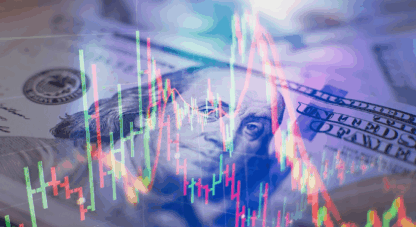We have discussed the high value of systems and teams in this space before. Collective action can be powerful and productive. It can also be immensely destructive. Perhaps both assertions can be proved by the most concerted of collective actions—war.
In preparation for it, of course, armies train. They teach soldiers new skills and open many opportunities for travel, experience, and advancement. However, they shut off many opportunities as well. When the cadence caller shouts “left,” a soldier’s left foot had better be hitting the ground. He’d better be clothed and equipped exactly like his fellow marchers, marching in the same direction, dressed and covered perfectly (lined up left and right, forward and aft), and in step with the cadence. All other options are unacceptable.
These characteristics of providing new opportunities and eliminating old ones provide fodder for the age-old debate on centralization vs. decentralization. Each offers possibilities not available to the other; each has weaknesses the other does not have.
Somewhere along the line someone came up with the idea of combining them. There would be some overarching authority with several semi-independent, semi-subordinate entities underneath it. Ancient Israel before the age of kings was perhaps the first significant example, but other nations made use of it as well—ancient Greece and Rome among them.
With the rise of worship of the Triune God (three in one; diverse yet perfectly unified), and especially after the Reformation wherein the Pope was supplanted in many countries by General Assemblies, the concept eventually came into its own. Civil polity eventually followed religious polity (as it always does), and the age of republicanism entered history in a much bigger way.
America was the crown jewel of this trend, but since 1861 (and even earlier) the US has been reversing it—in fits and starts, to be sure, but reversing it just the same.
Globalism was to be the ultimate demise of republicanism. It was sold, of course, as the exact opposite. Every nation would retain its distinctives but be subordinated to a world government when it came to things like settling disputes, saving the planet, ocean use, and so on.
There’s only one problem with this scenario, and it was baked into the pie from the beginning. Functional republics must have firmly established and overwhelmingly agreed-upon working definitions of right and wrong. If they don’t, the overarching government will provide its own. Not only that, it will insist upon adherence to its version—at any cost. Clearly, the world has nothing close to such working definitions. Now, America doesn’t even have them.
Since Donald Trump’s polarizing election as President in 2016, many of the players in this global power struggle have revealed their true beliefs in this regard. Klaus Schwab and his ilk, along with many billionaires, most of America’s Democratic Party, and a large proportion of its Republican Party, have revealed themselves as hard-core centralizers. Theirs, they say, is the urbane, sensible, sophisticated, and acceptable path. Centralization works, and decentralization is the province of deplorables—the great unwashed.
There’s a nugget of truth in their argument. Centralization created the great civilizations of the ancient world. But those civilizations had nothing like modern Western nations’ emphasis on the individual. And those who understand the times can clearly see that the World Economic Forum’s vision of utopia has much in common with that of Karl Marx, whose vision has been pursued at length and found totally wanting. Individuals’ part in communist nations was to totally expend their lives in service to the state without complaining.
Globalism has provided America much of its wealth in trinkets and fiat currency, even as it has robbed America of its culture and manufacturing base. Many resist the trend, and the battle continues, but the chickens appear to be coming home to roost.
This is background for the analysis you’ll find in the publications below. Day after day, week after week, the authors endeavor to chronicle and interpret the centralizers’ efforts, even as they try to help people prepare for worsening of the battle and its eventual end. Whether you side with the centralizers, the decentralizers, or the vanishingly few true republicans remaining, the information and analysis in these publications can be of great service to you.
Things can get difficult in such times, so a word to the wise is sufficient. You’ll find that word below.
Key Takeaways:
- The tortoise can still beat the hare
- Bubbles look bad, but they’re worse than they look
- Retail sales anemic at best
- Some tricks of the gold trade to be aware of
The McAlvany Weekly Commentary: Compounding Your Assets Without Adding New Money
David and Kevin begin the program this week with a discussion of the value of quiet frugality, saving, and prudent investing. Many of MPM’s clients have pursued precisely this course, and have built up quite a store of assets over the years—though you might never know it by looking at them or even visiting their homes. It’s an immensely productive mindset that gives them a strong financial foundation for life and a lasting legacy for their children and grandchildren. It stands in strong contrast to the financial habits of the nation and many investors today. From there the hosts transition to a discussion of the yen carry trade panic. Though it had largely abated by program time, the episode held volumes of important information for those with ears to hear and eyes to see. In David’s words, “I think what happened last week is going to live on with us and have implications as we move forward, as it changes the structure of finance.” And though the Bank of Japan capitulated on interest rate increases, David and Kevin make clear that there will be a Part 2 to this event. David puts it like this, “The pros recognize that last week was a reveal. It takes virtually nothing to upset the global financial markets and turn them inside out.” And if a word to the wise is sufficient, a $6 trillion meltdown might constitute a klaxon call for those who understand that markets often visit Wonderland, but eventually return to the real side of the looking glass. The hosts also discuss the deafening silence from the White House on several important events, the impact of inflation on the economy and consumers, and the surprisingly opportunity-laden—and powerful—world of precious metals investing.
Credit Bubble Bulletin: Unstable
Always very straightforward in his analysis, Doug delivers on his installment title with point after point after point demonstrating the immense instability in global markets. His summary: “I appreciate the Friday evening Bloomberg headline, ‘Wall Street Whiplash Schools Traders on Fragile Modern Markets.’” In short, investors are feeling a bit like a bull rider after eight seconds on Tornado. Now they’ve just got to dismount and get out of the arena without being gored (or keep on riding). Following an excerpt from another Bloomberg article describing the extreme market volatility, Doug’s analysis is simply not to be missed. A taste: “This is a Bubble unlike anything experienced in our lifetimes. It seems utterly determined to suck in every last person. There will be no easy profits betting on the timing of its demise. And it’s just refusing to cooperate with all these strategies—sophisticated and otherwise—aiming to hedge various market risks. Market dynamics will make it extremely difficult to be out of harm’s way when things finally unravel.” He follows this with analysis of consumer markets in both America and China, including this on China, “A favorite Bubble maxim: When major Bubbles burst, things invariably turn out worse than even the most bearish analysts had expected. I have closely monitored China’s Bubble for years. I’ve referred to their apartment Bubble as history’s greatest speculative Bubble—an unmitigated disaster. I’m seeing evidence that things are worse than I thought.”
Hard Asset Insights: Ahead of the Game
Morgan, too, reads the writing on the wall. The recent panic following the BoJ’s interest rate increase portends worse things to come. “One thing is clear… Last week’s yen carry trade ‘Minsky moment’ exposed late cycle market vulnerabilities that can’t be unseen or easily forgotten. Recall, volatility matters in and of itself. When prices turn volatile, financial leverage must be unwound. By extension, risk-on markets can turn risk-off—in a hurry.” He then turns to some better than expected sales reports in auto sales and building materials. While these certainly garnered some attention and raised some hopes, they must be put in a much broader perspective—which Morgan does. A good deal of related data refutes the apparent strength in retail sales suggested by these data points. Similarly, an increase in spending on building materials suggests good things for the housing market, but is refuted by data showing new building permits and housing units under construction. “All in all, despite the reported pop in July retail sales, real retail sales are still running flat at a 0.1% annualized growth rate—a figure inconsistent with a healthy and expanding economy.” From there, Morgan looks into the status of middle and lower income Americans. Their liquid assets are down, their debt is up, and their employment picture is beginning to look grim. Parts of the economy are doing well, but the bulk of it is showing signs of strain.
Golden Rule Radio: Comprehensive Metals Pricing
Rob’s kickoff of the program showed the white metals joining in the fun this week. After weeks of moving contrary to gold, they finally showed some sympathy and moved up too. This initiated some discussion of ratio trading and whether this was a good entry point for those interested in buying silver. Tory then spent some time discussing different ways to participate in the gold market, and different marketplaces in which gold manifests slightly differing prices. This is often confusing for people unfamiliar with the nuances of these markets, so the discussion is clarifying. Rob then uses this discussion to shed light on practices used by less scrupulous gold dealers to obscure their pricing. For instance, they might offer lower commissions, but they use a higher basis price for the gold based on a different and less representative marketplace than NYMEX, which MPM uses. The hosts emphasize that the price per ounce that you pay is the figure you should focus on, not the commission alone. From there, they discuss the seasonal tendencies of the gold price, along with a key factor that could influence those seasonal tendencies this year. Inflation also puts in an appearance in the discussion as the hosts take a look at indicators such as the Producer Price Index and Consumer Price Index. Both are down slightly, but still positive at higher than targeted rates. In short, inflation might be lower than in the recent past, but is still higher than is acceptable to the Fed—and much higher than is acceptable to consumers.
Photo by Andrey Korzun, CC BY-SA 4.0 <https://creativecommons.org/licenses/by-sa/4.0>, via Wikimedia Commons















